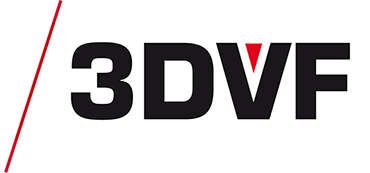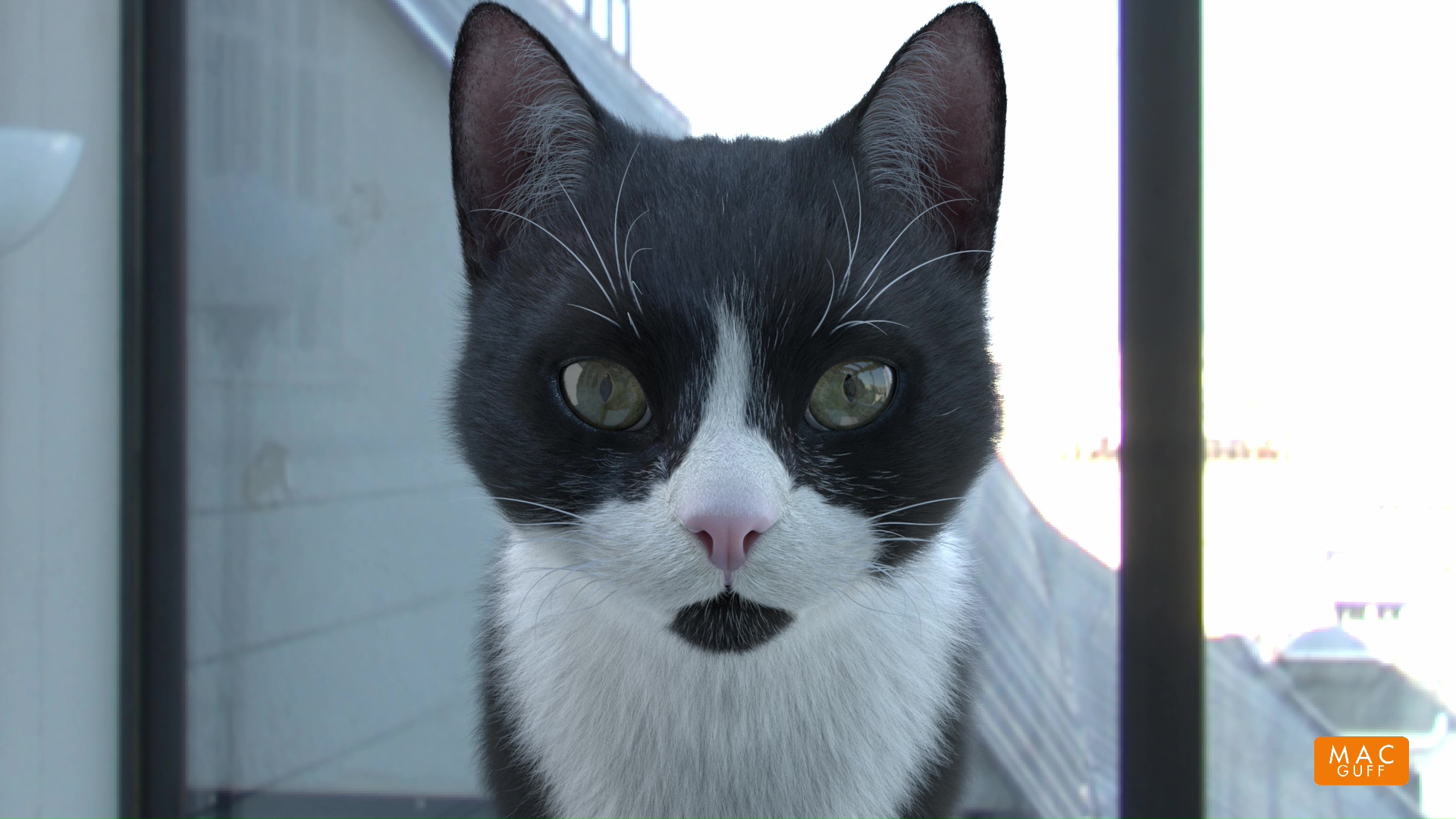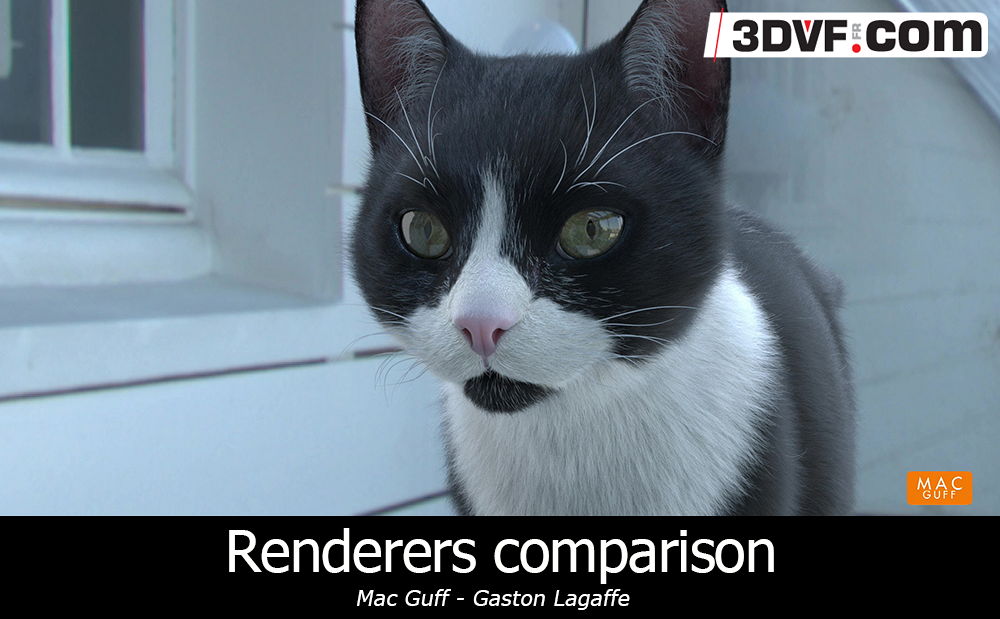
| [Version française disponible page précédente/French version available on the previous page]
For the French movie Gaston Lagaffe, Mac Guff created the VFX of about 150 shots, including the animals of the movie such as Gaston’s cat. Since Gaston Lagaffe hasn’t been released yet, it is still a little bit early to talk about the visual effects themselves. |
However, Supervisors Carine Gillet and Yann Blondel gave us some details about a few trials they did during preproduction.
Mac Guff compared several renderers in order to choose the best one for this movie. The studio also shared with us a video with some of those trials. You will therefore be able to form your own opinion using a blind test.
|
| 3DVF : Carine, Yann, first of all thanks for taking the time to answer our questions. Our readers already know Mac Guff, but they might not know what you do within the studio : could you tell us more ?
Carine Gillet : Hello 3DVF, thanks for inviting us. I’m a supervisor at Mac Guff. My specialties are rendering and lighting, but I have a generalist background too : therefore I can work on VFX projects that involve either 2D or full CG work. Yann Blondel : It’s a pleasure to answer your questions. I’m a VFX Supervisor. I usually work on movies from the script all the way to the Digital Cinema Package (DCP), including shooting and post-production. My role varies at each step, but there’s always the same idea : to act as the interface. |
3DVF : You’ve been using V-Ray in the past : why did you choose this renderer ?
Carine Gillet : V-Ray is easy do apprehend, with a « turnkey solution » approach. For a studio like Macguff, with projects ranging from advertisement to documentary and feature film, it is well adapted. There are tools focused on optimization, baking etc, that really make it « ready to use » tool. Yann Blondel : We moved away from an internal renderer. We tried V-Ray on a few projects (mostly ads) and we really liked the results, so we switched all our productions to V-Ray. |
ShowReel 2017#1 from Mac Guff on Vimeo.
| 3DVF : A few months ago, you launched a series of tests with a few renderers such as V-Ray, Arnold, RenderMan (Editor’s Note : those tests were made with the help of Pixar and Progiss, which is a partner of 3DVF). What were your needs and goals ? Did you want to focus on features, performances ? What where you looking for that was missing in V-Ray ?
Carine Gillet : We also did some tests with Clarisse.
|
Yann Blondel : I’m convinced you can get excellent results with any modern renderer. But it can take a lot of time. Mac Guff did not have a lot of experience regarding « furry » creatures and we wanted to make things as easy as possible. To sum things up, I was scared (and I was right !). I had looked for examples on the internet, and there were not many made with V-Ray close to what we wanted. One of our animals has « soft » fur, which is even more complicated to render (and let’s not talk about white fur). I played (I don’t work directly on CG anymore, so this were more surfacing tests) with several renderers. Carine, who is way more skilled than I am, took over on those tests. Below : some renders created by Macguff using various renderers. The names of the renderers are displayed at 1’22 », followed by another render created using the renderer chosen by Macguff. |
Mac Guff – tests de rendu from 3DVF on Vimeo.
| 3DVF : There are a lot of renderers on the market. Why did you choose to include Arnold and RenderMan in your trials ?
Carine Gillet : They have a very good reputation when it comes to fur, and it shows on the big screen. Yann Blondel : Choosing a software is linked both to features and the number of users. When you have to use 10 or 50 render workstations, the renderer has to be quite widely used, or easy to dive into. We chose Arnold because it became a standard, and RenderMan because it’s « The Father of All Renderers » when it comes to fur. |
3DVF : Could you tell us about your tests ? Which kind of scenes did you use ?
Carine Gillet : We created 4 basic similar scenes. Same model, same groom. Then we created the same environment in each renderer, with the shaders and lights available in each of them. We rendered those scenes on the same workstations, then we compared everything : how easy it was to use, shaders, light, how fast it was to use them, optimizations, render times, noise management, how well they could fit in a workflow, how much development we would need to get what we wanted, and of course the quality of the final render. Yann Blondel : We also did a blind test within the studio with all those rendered images, and asked everyone which one was the more realistic and natural. It was really interesting to get the feelings of a whole group of people. |
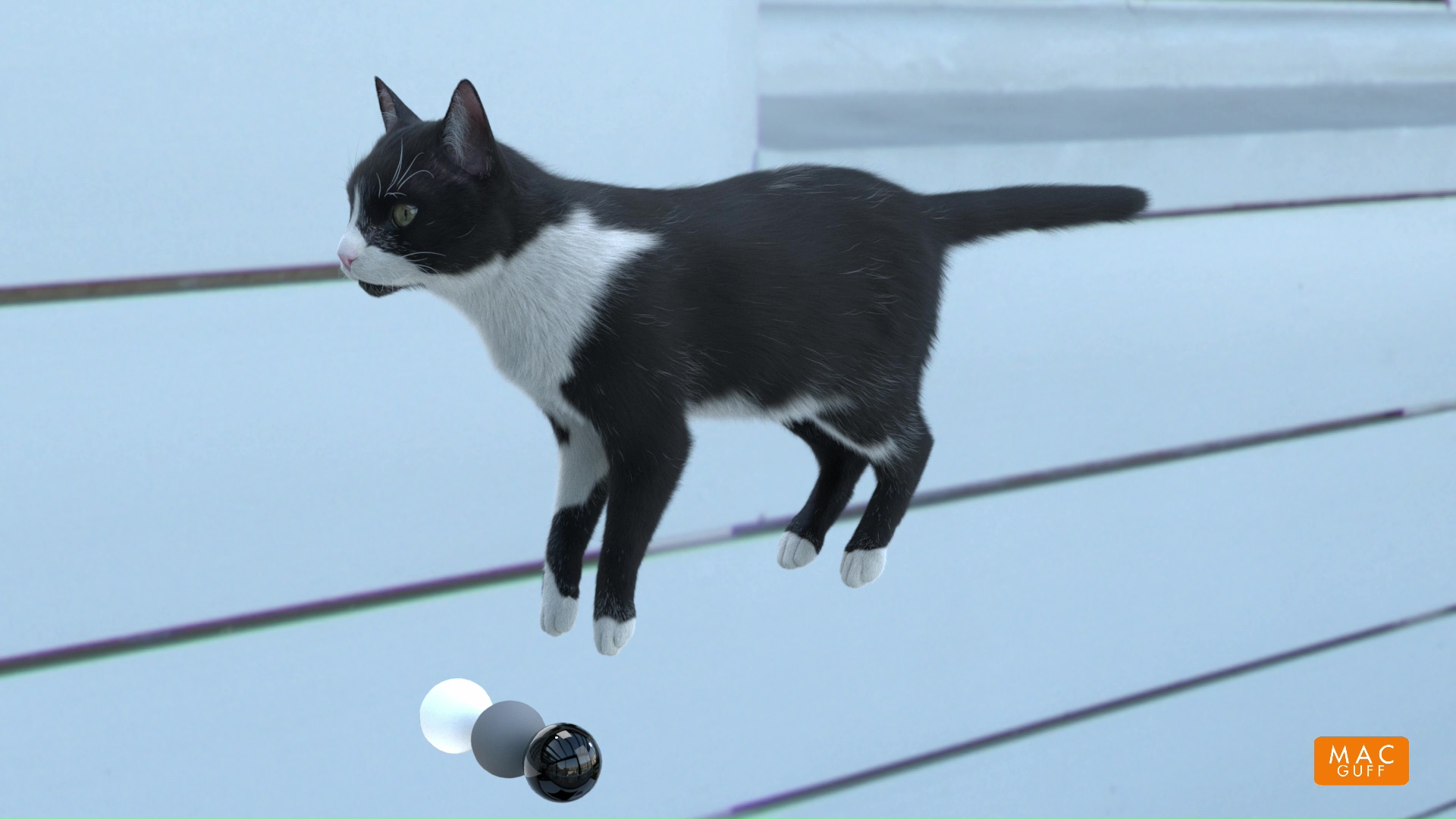
| 3DVF : Did you already know how to use Arnold and RenderMan ? How easy was it to dive into those renderers ?Carine Gillet : Actually, I’ve already used them in production several times, in different studios in France and abroad. But not for fur.Yann Blondel : Since I’m not directly using CG tools any more, I had only scratched the surface of those tools. I’ve tried RenderMan a few years ago and I found it really complicated. But RenderMan became very user-friendly (even if there are still a couple of things that could be improved).3DVF : Could you tell us more about the improvements you would like to see in future releases ? Carine Gillet : The Houdini/RenderMan bridge, for example with abc and vdb file formats. And the way RenderMan is integrated within Maya.
|
Yann Blondel : Since I hardly ever use CG during production, Carine experienced more issues thant I did.
A mid-sized studio such as Mac Guff typically used Maya as a hub to gather assets created by different software and tasks. The renderer should therefore be as adaptable as possible. Dur to the current limitations highlighted by Carine, RenderMan can still be a little bit intimidating for small studios/boutiques. And that’s a shame, because RenderMan is a real production renderer. It can take in a huge amount of data and is very stable. 3DVF : What results were you expecting to get ? Carine Gillet : We thought either Arnold or RenderMan would win. Actually, we were quite surprised in the end : we managed to get nice renders with V-Ray. Yann Blondel : Indeed, many people found our V-Ray renders more natural-looking than what we got with Arnold. It was really surprising. |
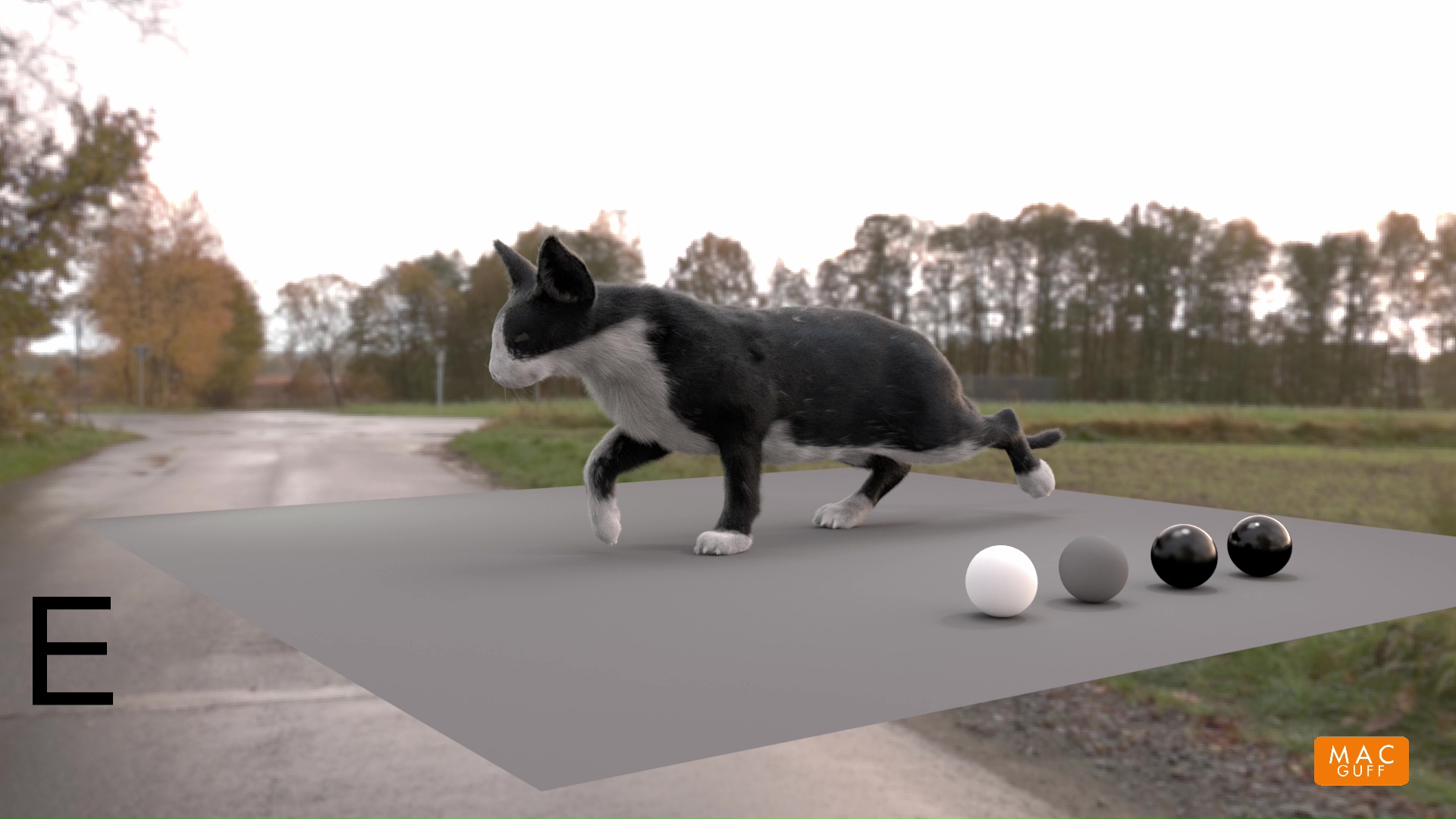
| 3DVF : What were your conclusions ? Do you have some data to share with us ?
ann Blondel : The main difference was not about render times, but how each renderer handled light. Compared to V-Ray and Arnold, RenderMan really did a wonderful job (with real focus spots and rim lights). With Arnold and V-Ray, our renders were duller, with a more diffused light. 3DVF : Could you sum up you feelings about those three renderers ? Carine Gillet : The tests were made in january of 2017, so quite some time ago. V-Ray, Arnold, RenderMan each have strengths and weakenesses. For our project, the real issue was fur, and the renderer that really convinced us was RenderMan. From a technical point of view he offered more possibilities, and from a visual point of view our raw renders were closer to what we wanted to achieve. We also knew we would have to handle white hair, and this is something we included early on in our tests.
|
Yann Blondel : We used RenderMan for each shot in the movie, even those whithout fur (environments, CGI objects). In the end, we had to use CGI on about 150 shots. We only used V-Ray for the FX (with Houdini), due to our pipeline and because it was easier for us.
3DVF : You also did some tests using Clarisse : what do you think of it ? Carine Gillet : It’s an interesting approach, especially for heavy environement scenes. But when it comes to fur, it wasn’t compatible with our workflow and tools on this project. Yann Blondel : We were impressed by how much instances and polygons Clarisse can handle. Therefore we thought we might be able to use it for hair. Unfortunately, we had issues when using it with Yeti, and we didn’t have enough time to solve them. |
| 3DVF : What will be the consequences of thoses tests and this project for Mac Guff ? Will you switch to RenderMan ?
Carine Gillet : We chose RenderMan for this project, but we also kept V-Ray for some other ongoing projects. We’re considering using RenderMan for some of our future projects. Yann Blondel : I don’t know the long term strategy of Mac Guff, but RenderMan convinced me. As a VFX Supervisor I find this renderer brings a lavishness to the picture (for example when it comes to light realism). 3DVF : Thank you both for your feedback ! |
Additional information
– Mac Guff‘s official website ; – Gaston Lagaffe will be realeased on April 4th in France ; – Progiss‘ website (3DVF partner and Pixar’s RenderMan reseller in France). |
